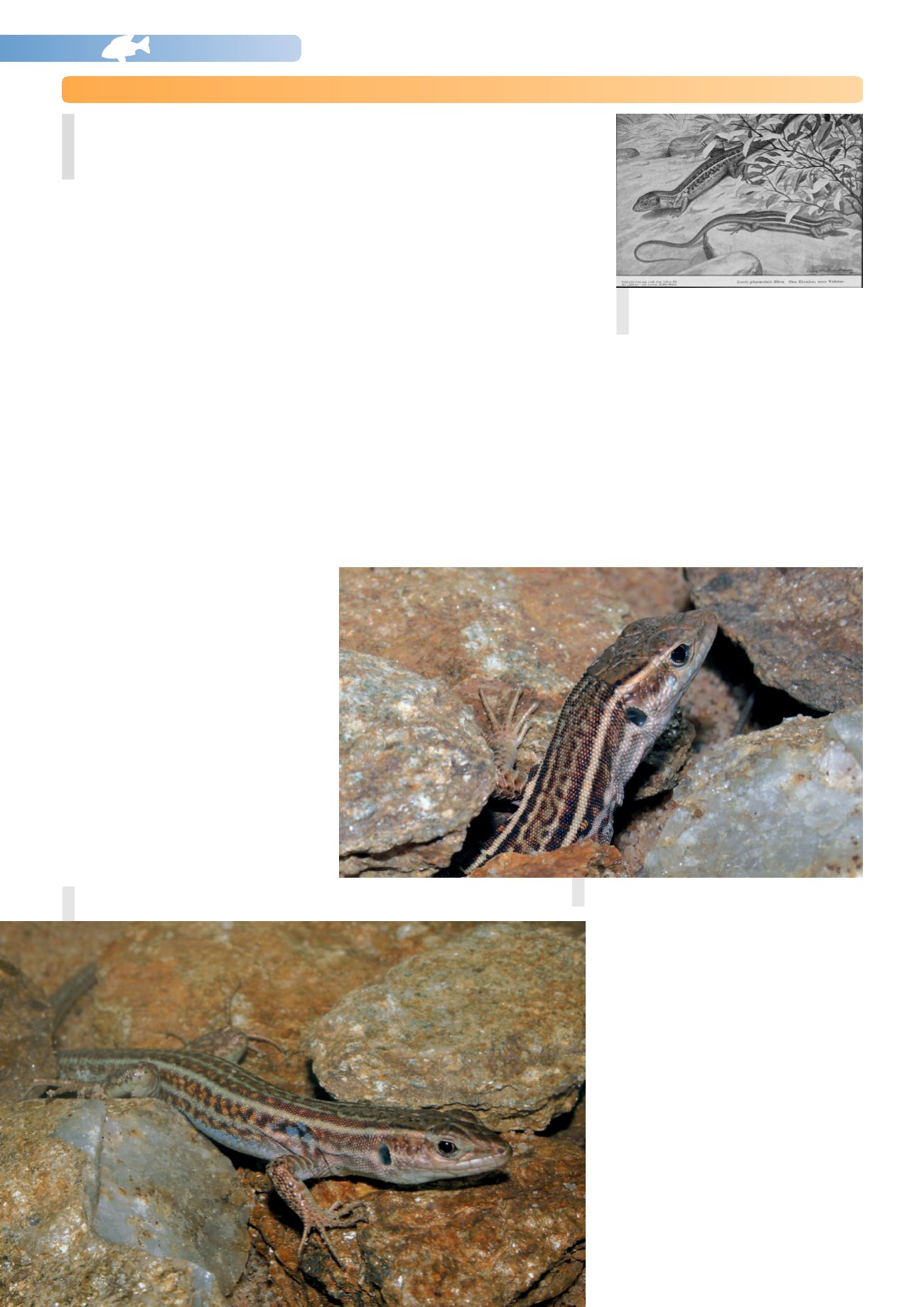
NEWS113
34
ThePeloponnese is a largepeninsula that formspart ofGreece. Itwas the
siteof kingdomsof theclassical age thatare reflected inour culture to the
present day: the ascetic Sparta; Corinth, where Alexander the Great was
first chosen as leader of theGreeks against the Persians; and the ancient
Olympia, the original home of theOlympicGames and site of one of the
sevenwondersof theworld, the statueof Zeus sculptedbyPhidias. Isn't it
fascinating to think that the lizards that are found there today are the
same species as ranaround the feet of theheroesof old?
LizardsfromthePeloponnese
byVolker Ennenbach
Lizards
Podarcispeloponnesiacus
youngmalebelow, femaleabove. all photos:FrankSchäfer
wo of the lizard species endemic to
(foundonly on) the Peloponnese are
at present available captive-bred in the
trade. Essentially, wild-caught specimens
of native European terrestrial vertebrates
haven't been traded for decades. The
arrival of the two
species, the Peloponnese
Wall Lizard, Podarcis peloponnesiacus
(B
IBRON
& B
ORY
, 1833), and the Greek Rock
Lizard,
Hellenolacerta graeca
(B
EDRIAGA
,
1886), is thus verypleasinganddeserving
of abriefmentionhere.
106yearsago....
....may not be Ancient History, but seems
like an eternity in our fast-living day and
age. But it was that long ago that Lorenz
M
ÜLLER
, a terrarium enthusiast and
herpetologist fromMainz, set out to visit
the Peloponnese and study the reptiles
andamphibians found there.Hisparticular
target was the two lizard species
mentionedhere.In1908he reportedonhis
experiences during the trip in a whole
series of articles published in the hobby
magazine Blätter für Aquarien- und
Terrarienkunde”. A PDF of the series is
available freeof charge tomembersof the
AqualogClub in theMemberArea.
ThePeloponneseWall Lizard
M
ÜLLER
described this lizardasubiquitous,
fabulously beautiful, and lightning fast.
And always ready to squabble with
conspecifics.Here is his lively portrayal of
the
species
(translated):
”
Lacerta
peloponnesiaca
is one of the fastest of all
lizards. It runs extremely quickly and can
leap astonishingly long distances. (…)
Distances measured inmeters are child's
play for it. I estimate that it can jumpup to
1.5meters in a horizontal direction, and a
lot further diagonally upwards. On
smooth terrain it runs in energetic spurts
with its tail bent slightlyupwards,and it is
interesting to see how while dashing
along it now and then performs one or
more long leaps for no obvious reason.
(…) Ingeneral
Lacertapeloponnesiaca
can
be termed a ground lizard. It is most at
home on hillsides covered in open scrub
and scatteredwith rocks, large and small;
at thesame time it isn'tcompletelyabsent
from flat ground.”
T
PeloponneseWall Lizard,drawingbyLorenz
Müller,1908.


